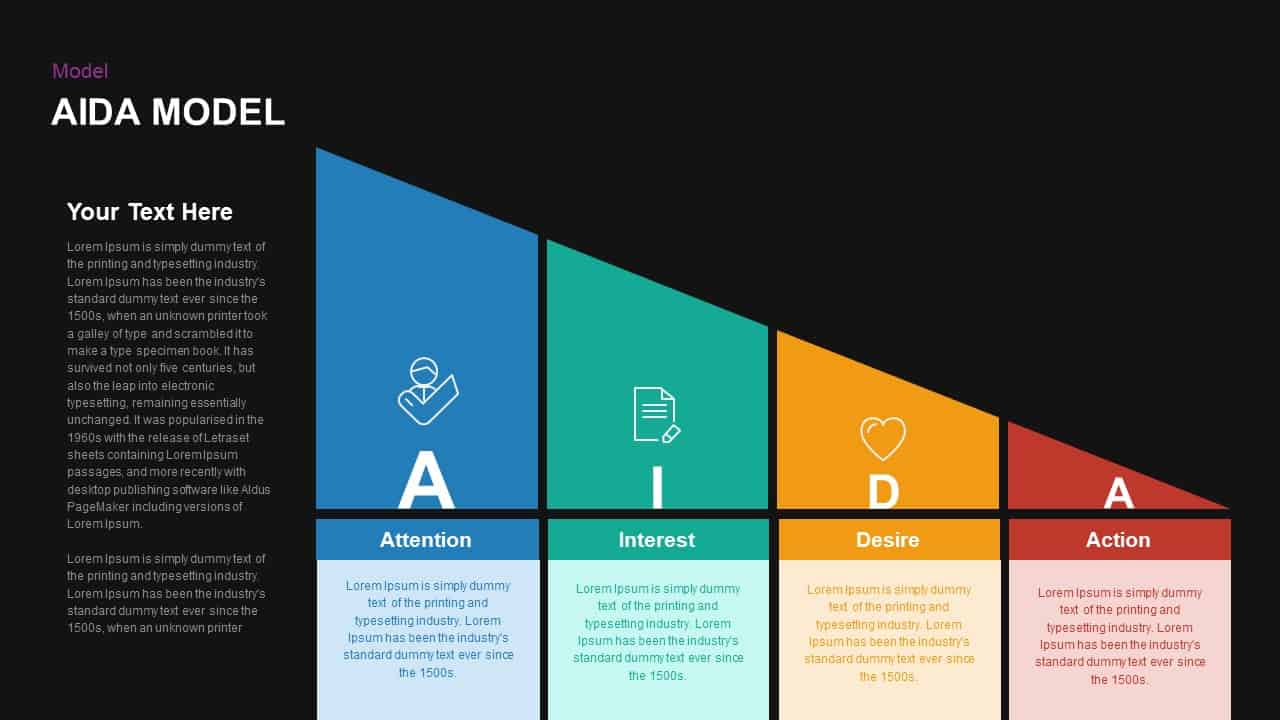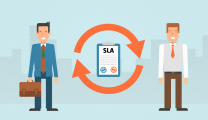1. Overview of AIDA model
1.1. What is the AIDA model?
AIDA model, also known as AIDA marketing funnel, is one of the typical formulas widely applied in advertising & marketing.
The AIDA model stands for Attention - Interest - Desire - Action, corresponding to the 4 cognitive stages that customers have to go through when deciding to buy a product or service. The mission of the company is to motivate customers to take action to convert to the next stage by building attractive content and messages to attract the psychology of the target audience.
The AIDA model is very flexible and can be applied in most Marketing campaigns with a variety of different methods from online channels (website, social media, paid advertising, ...) to offline channels (billboard, publications). ,...)
1.2. 4 main elements of the AIDA model
Attention – Attract customers' attention
The first stage of the AIDA model is Attention – that is, attracting the attention of the customer. Attention plays a fundamental role for companies to initially approach target customers, ensuring that they know about the existence of brands and products and services.
According to the Institute of Corporate Finance, this stage is often overlooked because many businesses assume that customers already know about them. This is a subjective mistake because first impressions are extremely important, it will contribute to building brand awareness in the minds of consumers and create excitement for them to go deeper into the buying journey.
The best way to capture the attention of customers is to produce unique, impressive content. Customers will easily be attracted by shocking messages, headlines or visually stimulating images. In addition, the messages with personalized content according to the interests and tastes of each target group also make customers focus on your brand.

Interest – Exciting for customers
Once the target audience knows the existence of your brand as well as the products and services you sell, capture their interest! To do this, companies need to understand the difficulties and challenges that consumers face and prove that they are the solution they are looking for. By identifying a customer's pain point, marketers will come up with contacts with solutions to their problems.
In addition, the content conveyed also needs to include specific evidence to increase credibility through case studies, customer stories and testimonials. This drives customer interest because it shows that other buyers have gotten the results they expected from using the product or service.
One of the most important things to remember is that content needs to be easy to understand and emotional with short, powerful messages, or consumers will lose interest.
Desire – Arousing the desire of customers
Once you've maintained the customer's interest, it's time to make them want to buy your product or service. The Desire step involves engaging the customer's logical senses and showing why they need your product or service. To do well at this step, focus on the benefits and value that the product or service brings instead of the uses and features.
In addition to appealing to the logical senses, businesses also need to create an emotional connection to arouse the desire in customers. To do this, use highly expressive words.
Action – Motivate customers to take action
The final step in the AIDA model is to transform the customer's thoughts and feelings into concrete actions. Actions that can be taken by customers include making a purchase, contacting a consultant, booking an appointment, registering for an experience, etc.
The decisive factor for success in the final step is the strategy of using Call To Action (CTA). A call to action is a short guide that directs consumers to take conversion actions. No matter what the CTA is, it needs to be clear and compelling to compel customers to take immediate action.
1.3. Extended AIDA Model
Over decades, the AIDA model still proves useful because of its flexible and effective applicability. In the age of information explosion, this model has been improved with different variations to suit the tastes of the target audience. Factors that are extended from the AIDA model in Marketing can be mentioned as:
Retention: Once you've successfully won over customers, it's important to build loyalty so they come back again and again. Providing loyalty programs or promotions, accumulating points will help customers stay longer with the brand.
Satisfaction – Ensuring customer satisfaction: The buying journey does not end when customers have obtained the product, a new stage will open when they use it and have feelings and reviews compared to the previous ones. earlier hope. Therefore, you must ensure to bring the best post-purchase experience to customers and make them happy with the product. By implementing customer care content such as surveys, receiving feedback.
2. Strategy to apply AIDA model in Content Marketing
Applying AIDA model in Marketing to produce content such as SEO articles, Emails or social media posts is a "secret" used by marketers to reduce bounce rate, increase engagement and make customers more attractive. row performs conversion actions. So how to implement Content Marketing according to the AIDA model standard. Follow the steps below:
Attention – Build a unique title
To attract customers' attention, you first need to create an attractive title and description that "catches the reader's eyes". The elements that make up an attractive, unique headline that you can use:
Emphasis on urgency: This is a method that uses the FOMO (Fear of Missing Out) effect to hit the target audience's psychology. Emphasize urgency in headlines with strong words that keep readers engaged and don't want to miss out.
For example, some phrases can be used such as “Only chance”, “Don’t miss”, “You will regret it if you miss…”
Content Personalization: A study from Statista revealed that personalized content achieves 17.5% of clicks compared to 11.4% of non-personalized content. So study the characteristics of your target audience.
For example, “…for great managers”, “marketers need to know…” are descriptions that will easily attract the attention of the target audience.
Arouse Curiosity: You can spark curiosity by asking your readers questions. Note that the questions should address the current concerns of the customer and make sure you provide the answer in the article.
For example: “Did you know?”, “Which option is for you?”
Use offers: Don't be afraid to use words like "free" or "promotional" to get the reader's attention.
Example: “Free trial – try it now!”
Interest – Exploiting customer interest
Once you have successfully captured the reader's attention, direct customers' interest in the products/services you sell. There are different asset implementations to do this:
Storytelling: Storytelling is a tried and tested method because it is based on people's emotions. If people feel connected to your story, chances are they'll want to dig deeper.
For example: “Wishing you a very happy new year. This Lunar New Year, surprise your loved ones with a gift that inspires them to be more productive every day” – Apple
Emphasize pain points: As noted above, consumers are constantly looking for solutions to their problems. Your job is to make it easier for them to find them. So create a connection with your customers by highlighting the issues they care about.
Example: If your business helps working parents have convenient, easy meals, one way to capture their interest is to produce content that talks about how hard it is. to get a full dinner on the table after a busy day.
Strong Expressive Words: To capture the attention of your customers, focus on tapping into their emotions by using highly expressive words.
For example, when you want to emphasize a customer's "pain point", phrases such as "anxious", "disappointed" or "confused" will create strong empathy when customers contact themselves. surname. Then, you can use words to describe the feeling of satisfaction when customers use products and services such as "comfort", "freedom", ...
Include facts: Using data is one of the ways to help build customer trust and credibility. You can use an interesting fact or statistics to keep the reader interested and remember it longer.
Example: Did you know – 90% of businesses believe that digital transformation is a vital task that determines their position in the market. However, only 56% of digital companies operate effectively.
Action – Call to action
In the final stage of the AIDA model, the technique of using CTA will decide whether the customer will take the conversion action or not.
For example, on print ads, the CTA might be “Visit a store near you,” while on landing pages the CTA might be “Order now.” In an email, the CTA might include “Visit website to learn more,” while on social, the CTA might include “Share this post.”
Through the article on Vietnam Manpower, it has given readers a comprehensive view of the AIDA model as well as the skills to apply the AIDA model in effective marketing.












Replies to This Discussion